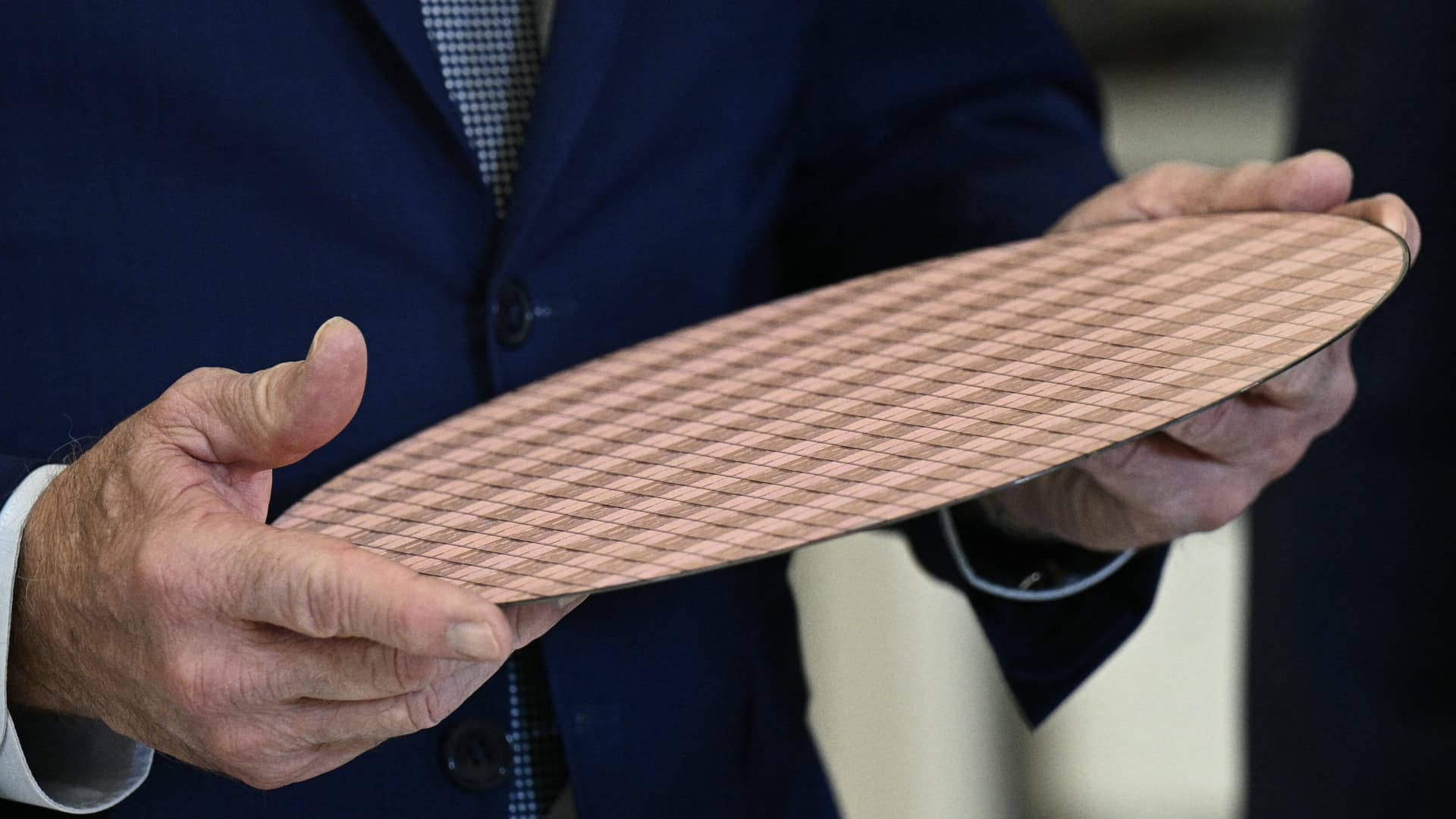
- Intel announced Monday that CEO Pat Gelsinger had retired from the company effective Dec. 1.
- Intel CFO David Zinsner and Intel products CEO MJ Holthaus were named interim co-CEOs. Frank Yeary will serve as interim executive chair.
- The company has been mired in an extended slump due to market share losses in its core businesses and an inability to crack the artificial intelligence market. Intel's stock has fallen 52% year to date.
Intel ousted CEO Pat Gelsinger over the weekend, capping a tumultuous nearly four-year tenure at what was America's leading semiconductor company before its stock price and market share collapsed.
The company announced Gelsinger's resignation Monday morning, which a person familiar with the matter said came after a contentious board meeting last week over Gelsinger's perceived failure to respond to Nvidia's competitive edge and a lack of confidence in Gelsinger's turnaround plans.
Intel CFO David Zinsner and Intel products CEO MJ Holthaus were named interim co-CEOs. Longtime board member Frank Yeary will serve as interim executive chair. Shares of Intel were down 2% Monday afternoon.
"We are working to create a leaner, simpler, more agile Intel," Yeary said. Yeary was a key driver in Gelsinger's ouster, said the person, who requested anonymity to discuss confidential board proceedings freely. Intel did not immediately return a request for comment on the board meeting.
Yeary, Intel's longest-serving board member, will now have to preside over yet another CEO search process. Gelsinger, 63, had an illustrious career at Intel, rising to become the company's first chief technical officer at the turn of the century, before he took a senior role at EMC. Gelsinger returned to the company from VMware, where he was chief executive, to stabilize Intel in 2021, succeeding then-CEO Bob Swan.
"It has been a challenging year for all of us as we have made tough but necessary decisions to position Intel for the current market dynamics," Gelsinger said in a press release.
Money Report
The board meeting that led to Gelsinger's ouster was first reported by Bloomberg.
Gelsinger set out an audacious plan when he arrived in 2021 to transform the languishing company into a chipmaking juggernaut. He sought to achieve parity with the two leading chipmakers, Samsung and Taiwan Semiconductor Manufacturing Co. He pursued big buildouts in the U.S. and around the world, a costly endeavor that weighed heavily on Intel's free cash flow and increased the company's debt load.
Get a weekly recap of the latest San Francisco Bay Area housing news. >Sign up for NBC Bay Area’s Housing Deconstructed newsletter.
He also wooed government investment, positioning Intel as the single-largest beneficiary of the U.S. CHIPS and Science Act. Government money has begun to flow to Intel in recent weeks and will aid the company's chip fabs in Arizona and Ohio. Gelsinger's retirement comes a week after Intel and the CHIPS and Science Act office finalized a $7.86 billion grant.
Gelsinger also moved to position the company as vital to U.S. national security. He won a multibillion-dollar contract with the Department of Defense to build secure chips, and in meetings with analysts and prospective customers stressed that Intel was a trusted partner of the U.S. government.
But all that was not enough to assuage investors, who increasingly began to see Intel's aggressive spending as a folly.
Troubled tenure

Investors became increasingly leery of Intel's prospects, especially as the artificial intelligence wave buoyed rival Nvidia and left Intel in the dust. The company's market cap is less than half of what it was in 2021, and briefly crossed beneath $100 billion earlier this year. The company's stock has fallen 52% year to date.
In August, Intel reported disappointing quarterly results, sparking the sharpest sell-off in 50 years, and said it would lay off more than 15% of its workforce as part of a $10 billion cost reduction plan. CNBC reported that Intel had engaged advisors to defend itself against activist investors.
There is no indication yet that an activist has taken a sizable position in the company's stock, nor any sign that overtures have been made to Intel's board. It isn't clear what agenda an activist would pursue at the company.
Intel revealed plans in September to turn the company's foundry business into an independent subsidiary, a move that would enable outside funding options. That same month, Qualcomm made overtures about a possible takeover.
Gelsinger's successor, whenever found, will assume command of a company that is smaller and more challenged than ever before. Many of the problems Gelsinger faced were inherited: to not pursue a chipmaking mandate for Apple's mobile devices and passing on an acquisition of Nvidia were just two of the reportedly conscious decisions that Intel's prior leadership made that left the company at a competitive disadvantage.
Those decisions were made by Intel's board and past CEOs. But Gelsinger's weekend ouster raises fresh questions about the company's governance. Lip-Bu Tan stepped off Intel's board earlier this year, leaving the company without any directors who had semiconductor expertise. Numerous reports have emerged in the weeks since detailing a dysfunctional corporate acquisition strategy and boardroom rancor.
— CNBC's Jordan Novet contributed reporting.






